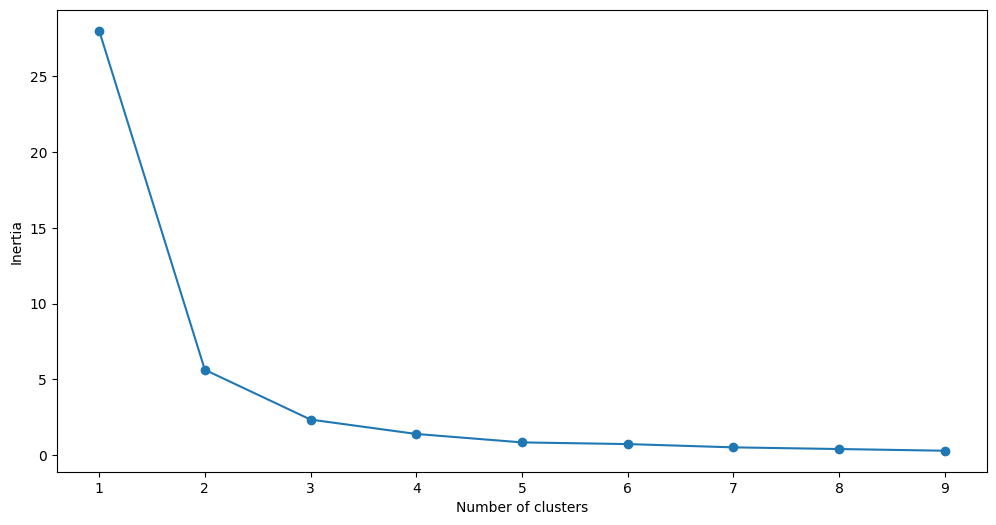Here are the steps involved in the elbow method:
- Run the clustering algorithm for different values of k:
Apply the clustering algorithm (e.g., k-means) to the dataset for a range of k values. - Compute the sum of squared distances (inertia):
For each value of k, calculate the sum of squared distances between each data point and its assigned cluster centroid. This is often referred to as the “inertia” or “within-cluster sum of squares.” - Plot the results:
Create a plot where the x-axis represents the number of clusters (k), and the y-axis represents the corresponding inertia values. The plot typically looks like an arm, and the “elbow” point is where the rate of decrease in inertia starts to slow down. - Identify the elbow point:
The optimal number of clusters is often associated with the “elbow” of the curve, where adding more clusters does not significantly reduce the inertia. The elbow point represents a balance between having enough clusters to capture the data’s structure and avoiding overfitting.
Here’s a simple example using the elbow method with scikit-learn’s k-means and Matplotlib:
from sklearn.cluster import KMeans
from sklearn.preprocessing import StandardScaler
import numpy as np
import pandas as pd
import matplotlib.pyplot as plt
%matplotlib inline
data = np.array([[1, 2], [3, 4], [5, 6], [7,8], [9,10], [11, 12], [13,14], [15,16], [17,18], [19, 20],[1,3], [1,4], [1,5], [1, 6]])
# Instantiate the StandardScaler
scaler = StandardScaler()
# Fit and transform the data
data_scaled = scaler.fit_transform(data)
# fitting multiple k-means algorithms and storing the values in an empty list
sil_score= []
for cluster in range(1,10):
model = KMeans(n_clusters = cluster, init='k-means++')
model.fit(data_scaled)
sil_score.append(model.inertia_)
# converting the results into a dataframe and plotting them
df = pd.DataFrame({'Cluster':range(1,10), 'SSE':sil_score})
plt.figure(figsize=(12,6))
plt.plot(df['Cluster'], df['SSE'], marker='o')
plt.xlabel('Number of clusters')
plt.ylabel('Inertia')
plt.show()

Looking at the above elbow curve, we can choose any number of clusters between 3 to 6.
Let’s set the number of clusters to 5 and fit the model:
# k means using 5 clusters and k-means++ initialization
kmeans = KMeans(n_clusters = 5, init='k-means++')
kmeans.fit(data_scaled)
pred = kmeans.predict(data_scaled)
# value count of points in each of the above-formed clusters
frame = pd.DataFrame(data_scaled)
frame['cluster'] = pred
frame['cluster'].value_counts()
1 6
3 2
0 2
2 2
4 2
Name: cluster, dtype: int64In the resulting plot, the elbow point corresponds to the optimal number of clusters. Keep in mind that the elbow method is a heuristic, and the interpretation may not always be clear-cut, especially if the data does not exhibit a clear elbow. It is recommended to combine the elbow method with other evaluation metrics (e.g., silhouette score) for a more comprehensive analysis.

